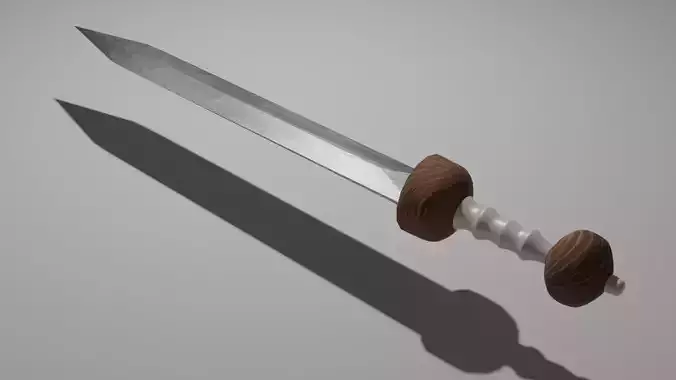1/21
The Roman Gladius: A Legendary Sword of Ancient Rome
The Roman Gladius is an iconic symbol of the might and prowess of the Roman Empire, a sword that played a crucial role in shaping the course of history. This remarkable weapon, often referred to as the sword of the Romans, is characterized by its distinctive design and was an essential part of the Roman soldier's arsenal.
The Roman Gladius is a short, double-edged sword with a straight, broad blade that tapers to a sharp point. Its blade is typically around 18 to 24 inches (45 to 60 centimeters) in length, making it highly effective for close-quarters combat. The sword's design allowed Roman soldiers to wield it with precision and agility, making it ideal for thrusting and slashing in the midst of battle.
The Gladius features a simple yet effective hilt and handle design. The hilt is often made of wood or bone, with a prominent, circular pommel that served to counterbalance the blade. A distinctive feature of the hilt is the guard or crossguard, a small, horizontal bar that protected the user's hand during combat. The handle was often wrapped in leather for a secure and comfortable grip.
Roman Gladii were expertly crafted by skilled blacksmiths, using high-quality steel for the blade. The sharp edge was created through careful tempering and hardening processes, ensuring a durable and lethal weapon. The craftsmanship of the Gladius was a testament to Roman engineering excellence, reflecting both functionality and aesthetics.
The Roman Gladius was renowned for its versatility on the battlefield. Roman soldiers, known as legionaries, were trained to use it for both thrusting and slashing motions. In close combat, the Gladius was a formidable weapon, capable of penetrating an enemy's armor and delivering lethal blows. Its balanced design allowed for precise and controlled strikes.
The Gladius played a pivotal role in the expansion of the Roman Empire. As Roman legions conquered vast territories, this sword became a symbol of Roman military might and discipline. It was not only a weapon but a mark of a soldier's prestige and identity. The Gladius was instrumental in the success of the Roman legions, helping establish and maintain the Pax Romana.
The legacy of the Roman Gladius lives on through its cultural impact and significance. It remains a symbol of the Roman military's prowess and the enduring power of the ancient Roman Empire. Its design and influence continue to captivate historians, collectors, and enthusiasts alike, making it one of the most iconic and recognizable swords in the world.
REVIEWS & COMMENTS
accuracy, and usability.





















